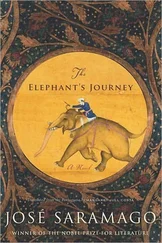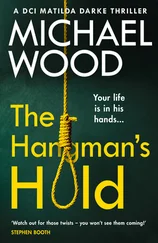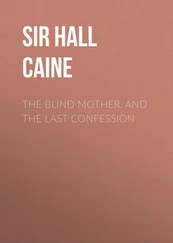Michael Caine - The Elephant to Hollywood
Здесь есть возможность читать онлайн «Michael Caine - The Elephant to Hollywood» весь текст электронной книги совершенно бесплатно (целиком полную версию без сокращений). В некоторых случаях можно слушать аудио, скачать через торрент в формате fb2 и присутствует краткое содержание. Город: London, Год выпуска: 2010, ISBN: 2010, Издательство: Hodder, Жанр: Биографии и Мемуары, на английском языке. Описание произведения, (предисловие) а так же отзывы посетителей доступны на портале библиотеки ЛибКат.
- Название:The Elephant to Hollywood
- Автор:
- Издательство:Hodder
- Жанр:
- Год:2010
- Город:London
- ISBN:978-1444700015
- Рейтинг книги:4 / 5. Голосов: 1
-
Избранное:Добавить в избранное
- Отзывы:
-
Ваша оценка:
- 80
- 1
- 2
- 3
- 4
- 5
The Elephant to Hollywood: краткое содержание, описание и аннотация
Предлагаем к чтению аннотацию, описание, краткое содержание или предисловие (зависит от того, что написал сам автор книги «The Elephant to Hollywood»). Если вы не нашли необходимую информацию о книге — напишите в комментариях, мы постараемся отыскать её.
The Elephant to Hollywood — читать онлайн бесплатно полную книгу (весь текст) целиком
Ниже представлен текст книги, разбитый по страницам. Система сохранения места последней прочитанной страницы, позволяет с удобством читать онлайн бесплатно книгу «The Elephant to Hollywood», без необходимости каждый раз заново искать на чём Вы остановились. Поставьте закладку, и сможете в любой момент перейти на страницу, на которой закончили чтение.
Интервал:
Закладка:
When I’d finished my bit on the film, I packed up and went home to enjoy the rest of the summer of 2007. I knew work was continuing on the movie, but I couldn’t have been more shocked to hear the following January that Heath had died of an accidental drugs overdose. It was the most terrible waste not only of a great talent, but of a gentle and thoughtful person. It was hard to watch the finished film and see all the vitality that Heath exudes, knowing that he was dead, and inevitably much of the publicity surrounding the premiere in July 2008 was centred on the tragedy of his death – try as we might to steer journalists away from that.
It was a great moment when Heath won a posthumous Oscar for Best Supporting Actor. We had all predicted he would win it, right from his first scenes, and it wasn’t just me – everyone on the unit thought he deserved it. It was a stand-out performance – the opening and closing monologues alone, let alone all the other scenes – and I thought it was very important for his family as well. I was a bit surprised that neither the film itself nor Chris Nolan were even nominated for an Academy Award, though, because The Dark Knight is an extraordinary piece of film-making. For an action movie it has great depth and real drama – and a serious message, if you want to find it. It’s got great comic moments, too – even Heath, who is playing a complete homicidal psychopath, gets laughs. At one point the Joker sees Maggie Gyllenhaal, and Heath just reaches up and very delicately, almost in a feminine way, brushes back a couple of strands of his stringy hair: it’s genius. My butler gets laughs, too, and I’ve been discovered by a whole new set of teenage fans who often stop me in the street, but there’s real tenderness there between Alfred and Bruce Wayne. It’s back to that father figure again: I’ve gone from Alfie to Alfred, so I guess you could say I’ve become more dignified over the years!
Taking on the role of an old man with Alzheimer’s might not be everybody’s idea of dignified, but Is Anybody There? was one of those challenges I couldn’t resist. When I get a script, one of the things I ask myself is: is this more difficult to do than the last one? And this part certainly was. I drew on my experience of Doug Hayward’s dementia and so it was very sad for me – in fact I think it’s the saddest film I’ve ever made. Shakira didn’t like it at all because my character actually died of dementia; we persuaded Natasha who was pregnant at the time not to see it because we thought it would upset her. My family were reacting like that because it was me lying in that hospital bed, but what I completely forgot to factor in was how harrowing it would also be for an audience to watch – so it didn’t exactly do Star Wars numbers at the box office. But it got great critical attention and I’m proud to have done it.
22
Back to the Elephant
I once saw a documentary in which scientists put several hundred rats in a very big comfortable roomy nest and fed them well. The rats all lived very happily alongside each other until the scientists gradually started to decrease the size of the nest, so that the rats had less space. The rats began to show aggression; that was followed by fights – followed by killings. Sound familiar? It does to me. It describes the pattern of social housing in this country, which produces the most violent sections of our society – and it’s the section that I came from.
In 2009 I went back to my roots and the soil was so shallow, there seemed little chance of it ever producing a healthy plant. The reason I went was a film called Harry Brown and it was a movie I just had to do. We filmed on location on a massive council estate that was due for demolition, back at the Elephant and Castle. It’s my home patch and we were working just round the corner from a mural depicting Charlie Chaplin and me (not that I’d compare myself with the great man, it’s just that we came from the same area). I’ve been in many council flats before in my life, but I had forgotten just how tiny these living spaces are, and when I saw the size of the flat that was supposed to be my ‘home’ I immediately thought about that documentary. People need space to live together, and this flat would hardly have had enough room for a dining table that could seat a family to eat, which is something I think is of the utmost importance in bringing up children.
Not only were the flats tiny, but the blocks were accessed by the most dangerous and threatening entrances, exits, stairs and lifts you could imagine. The only conclusion I could draw was that the architects who had designed these monstrosities had complete contempt for the people who would be living there. Still, I thought, at least they were being pulled down. The whole area is now being gentrified and I asked an official I met where they had re-housed the tenants. ‘As far away from each other as possible,’ was his rather enigmatic reply. But not everyone was pleased to be getting out. While we were there, we came across a small BBC team filming the last few residents. To my astonishment they said that their documentary was about the terrible loss of community spirit the tenants suffered when they began to pull down the estate. I looked from them and then back at this eyesore. It was hard to believe…
The last time I’d been back to the area I grew up in for professional reasons was in autumn 1985 when Bob Hoskins asked me to take a cameo role in his film Mona Lisa . I’d first got to know Bob when we were in Mexico together on The Honorary Consul and we’d become great friends – a friendship that had flourished in the slightly less testing surroundings of The Hamptons on America’s East Coast, filming Sweet Liberty with Alan Alda earlier that summer. Bob had invited me to his production office to discuss the part but as I sat in the car getting further and further into the depths of the south London streets I’d grown up in, I began to wonder what I was letting myself in for. I knew it was a small-budget movie, but Bob’s office – a huge, dark run-down Victorian building – didn’t bode well. ‘It was a hospital years ago,’ he said cheerfully as he led me through the maze of corridors, ‘before it became a lunatic asylum, St Olave’s.’ I remember stopping dead in my tracks. ‘But I was born here!’ I said. There can’t be many movie actors who end up discussing their role in a film in the very hospital they were born in.
I know only too well how tough it is to grow up in an environment like the Elephant and I’m aware that I, too, could easily have gone bad – but I took a different course, and the longer we spent in the neighbourhood, the more I wanted to find out why. Quite a bit of Harry Brown was shot at night and that gave me the opportunity to talk to some of the gangs of youths – black, white, British-born and immigrant – who were hanging about. I got to know them and began to win their trust a bit and I was first astonished and then pleased that they were prepared to talk to an old white man on an equal basis. As they opened up, it dawned on me that although we’d had nothing as kids, I had had a life of luxury compared to the young men I was talking to. Our pre-fab house was small, but it was self-contained: it had a twenty-foot-square garden, a garden fence, a front door and a garden gate. It was the first house I’d ever lived in with electricity and hot water taps and an inside toilet and a bathroom. And this house was only a thousand yards from the monstrous blocks where these boys had grown up.
But the house was only part of it. I had a loving family with a father who stayed with us and a mother who cared for us. Most of these boys came from one-parent families – or none. It’s not that single parents can’t do a great job raising their children – after all, there were many kids in my generation whose fathers had been killed in the war – but it makes it much harder, and if they are poor as well, it’s an extra handicap. I was lucky, too, because I had a good education – at least at Hackney Downs and Wilson’s Grammar School. A lot of these boys were bright but seemed to have opted out of school completely. I’m not saying they should be learning Shakespeare or doing Latin and Greek at Cambridge, but on a more practical level, they could benefit from real education and a sense of possibility. One guy I met told me he likes to build things, likes doing woodwork. It doesn’t mean he has to be a carpenter – although that would be a good start: he could be a sculptor or a wood-carver. Kids need to have a direction for their talents, otherwise they won’t know where to go.
Читать дальшеИнтервал:
Закладка:
Похожие книги на «The Elephant to Hollywood»
Представляем Вашему вниманию похожие книги на «The Elephant to Hollywood» списком для выбора. Мы отобрали схожую по названию и смыслу литературу в надежде предоставить читателям больше вариантов отыскать новые, интересные, ещё непрочитанные произведения.
Обсуждение, отзывы о книге «The Elephant to Hollywood» и просто собственные мнения читателей. Оставьте ваши комментарии, напишите, что Вы думаете о произведении, его смысле или главных героях. Укажите что конкретно понравилось, а что нет, и почему Вы так считаете.












